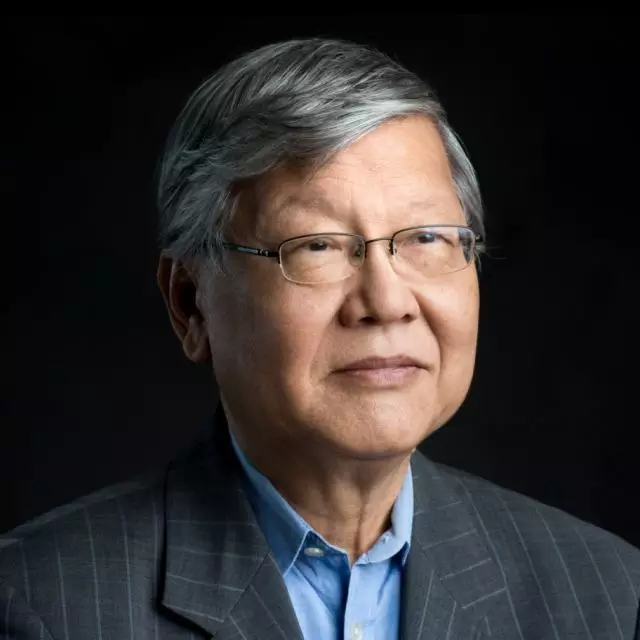
Asia Global Institute's Distinguished Fellow Andrew Sheng and Professor Xiao Geng say now is the time to press ahead with structural reform.
HONG KONG – Secular stagnation is looming worldwide, and China is no exception. Globally, the unprecedented monetary and fiscal stimulus following the 2008 financial crisis has caused debt, equity, and property prices to peak, even as trade and investment decline; all of this has depressed demand, economic growth, and inflation. For China, this is complicating official efforts to boost the role of market forces in shaping economic outcomes. Will the authorities' latest move - devaluation of the renminbi - be enough to turn the tide?
To be sure, China's leaders have shown a commitment to ceding some control over the economy, signaling to businesses that they must adjust to a "new normal" of slower output gains as the country pursues structural reforms aimed at establishing a more sustainable growth model. But rising risk - reflected in the recent plunge in China's stock market - has compelled the government to step in to limit the fallout. And, with policy uncertainty and market volatility driving Chinese businesses to sit on, rather than invest, large cash balances, the pressure of secular stagnation is growing more severe.
China's situation, while far from dire, is certainly challenging. Though real annual GDP growth seems to have stabilized at around 7 per cent, almost all key economic indicators - such as nominal GDP, fixed-asset investment, floor space under construction, nominal retail sales, auto sales, electricity output, railway cargo, and iron ore imports - are well below their four-year growth average.
In the first seven months of 2015, China’s total trade volume decreased by 7.3%, with exports and imports dropping 8.8% and 8.6%, respectively, in July. The country’s producer price index has fallen for 42 consecutive months, to a record-low of -5.4% in July. And foreign-exchange reserves fell to $3.65 trillion in July, from a peak of $3.99 trillion a year earlier.
For a while, government efforts to promote the services sector, together with wage increases, helped to stimulate domestic consumption and stave off deflation. Such factors contributed to the optimism of China’s stock-market bulls about early reform dividends, even as the bears recognized that the economy faced stronger-than-expected headwinds, including weak global aggregate demand, propped up in many economies by expansionary monetary policies.
When China’s problems became more widely apparent, investor confidence sank – and so did the stock market. China’s government then stepped in with measures to stabilize equity prices. But such interventions inevitably involve a redistribution of market losses, raising the question of whether scarce state resources would be better allocated toward stimulating the real economy, rather than the financial sector. And, because state intervention puts a floor beneath market participants’ losses, it undermines the effectiveness of conventional macro policies.
To be sure, investors understand that the state can and will intervene to ease temporary market instability. But market confidence hinges on what is sustainable in the longer term. If China is to avoid the deflation trap, revive investment, bolster competitiveness, and accelerate long-term growth, it must continue its quest to foster the animal spirits of innovation and entrepreneurship.
After all, China’s long-term future hinges on its ability to boost market confidence. Nobody will be inspired to increase investment in China if they cannot trust that the economy will eventually enable them to turn a profit. That is why it is so important that China’s leaders not only promote domestic consumption to offset stagnation elsewhere, but also ensure that state and market forces work reliably in concert.
To some extent, the authorities seem prepared to do what it takes. Devaluing the renminbi by about 2% against the US dollar – the biggest one-day move since the renminbi officially eliminated its dollar peg – should give market forces more influence over the tightly controlled currency, while giving Chinese businesses a competitive edge in foreign markets.
But much more needs to be done. While China is far from insolvent – the country remains a net creditor, to the tune of nearly $1.8 trillion – more domestic liquidity must be released to support the economy, and especially the private sector, as it adapts to domestic and global structural changes. Indeed, it was the lack of stock-market liquidity, together with fragile confidence, that triggered the recent financial-market volatility.
China now confronts three structural imbalances. First, the banking system, which dominates lending, typically funds long-term investments with short-term bank deposits, creating a maturity mismatch. Second, Chinese balance sheets carry too much debt relative to equity. And, third, there is an imbalance between the state and the market, with the private sector still lacking access to liquidity relative to state-owned enterprises.
As recent bitter experience has shown, China’s government cannot continue to stimulate the economy by pursuing debt-financed investments. It is time to give private-sector players the tools they need to lead the economy toward more sustainable prosperity. This includes radically upgrading capital markets and actively promoting private innovation and investment, while using state assets to strengthen the social safety net by, say, filling gaps in the pension and social-security systems.
These issues are not technical, but political, as vested interests prefer to maintain bureaucratic control. But, with President Xi Jinping’s anti-corruption drive chipping away at the culture of personal gain among Chinese officials, now is the time to press ahead with structural reforms, not back away from them.
This article first appeared in Project Syndicate on August 17, 2015.
The views expressed in this article are the authors' own and do not necessarily reflect Asia Global Institute's editorial policy.

Distinguished Fellow, Asia Global Institute

President, Hong Kong Institution for International Finance
Room 326-348, Main Building
The University of Hong Kong
Pokfulam, Hong Kong